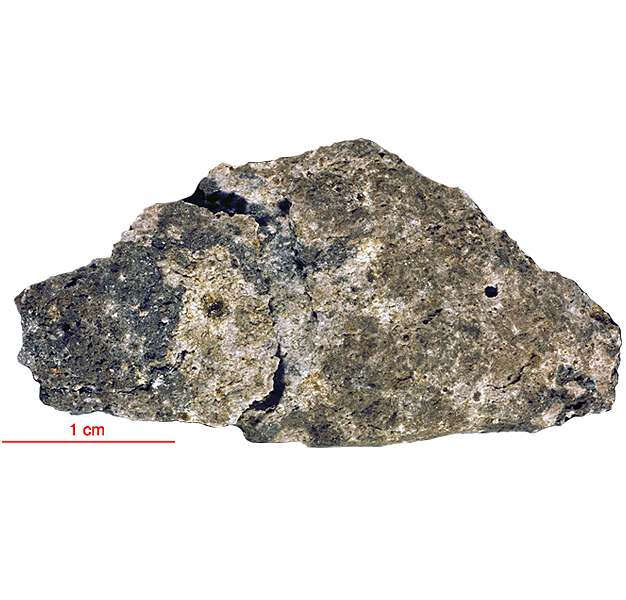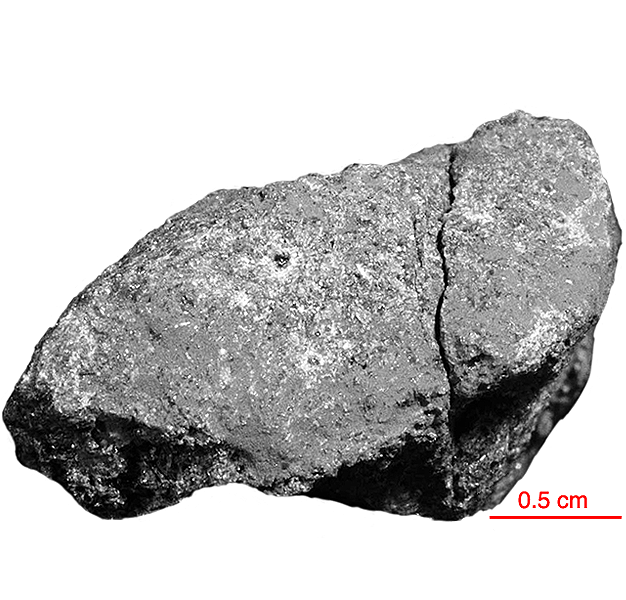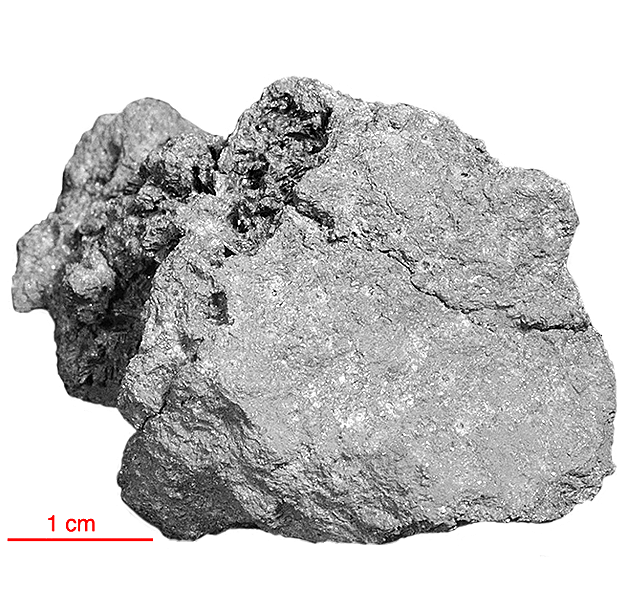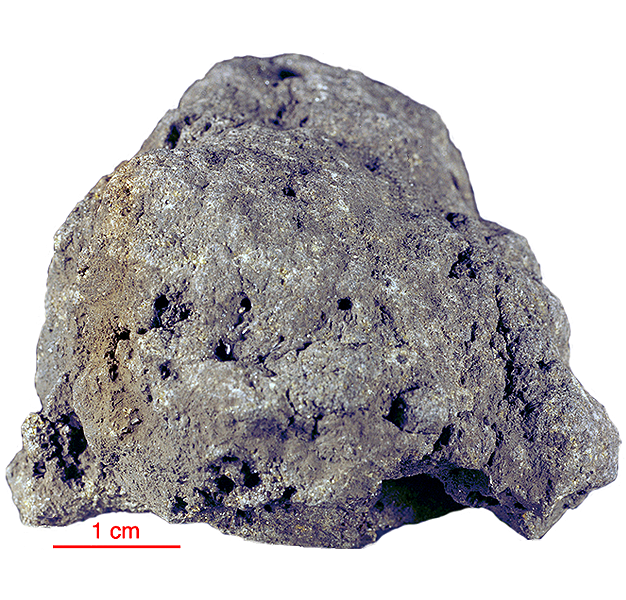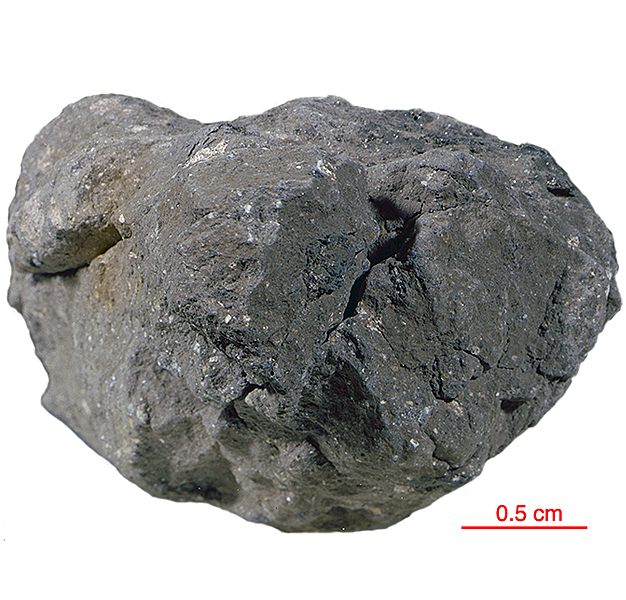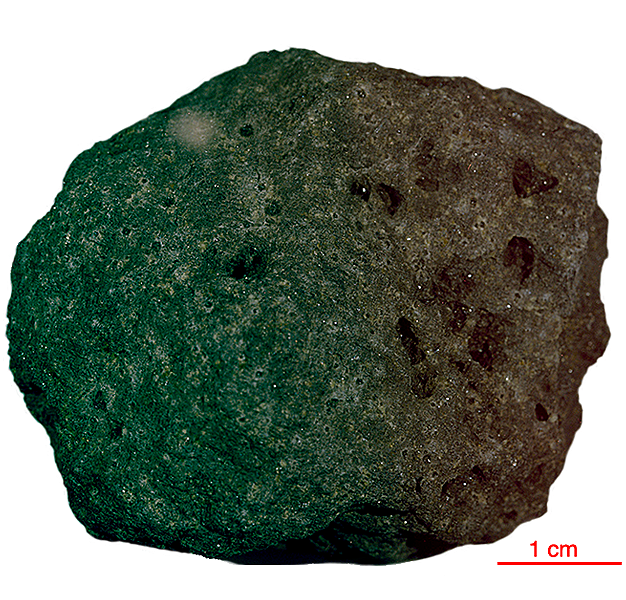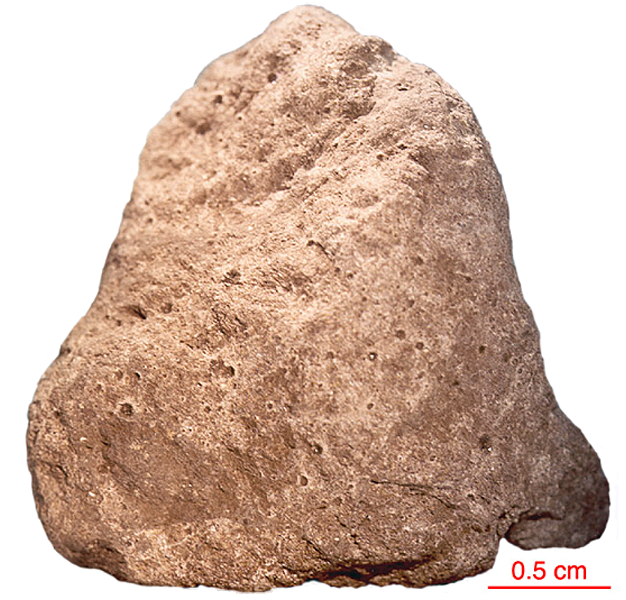
Fact sheet
12010 was collected from the outer rim of Middle Crescent Crater. Its outer surface is covered with small micrometeorite pits. 12010 has been found to be highly variable in composition and contains many basalt clasts (26%). It has been calculated that 12010 is approximately 86% basalt, 3% anorthosite and 7% KREEP (K, P and REE-rich basalt). It also contains glass particles and shocked mineral grains.
The sample weighed 360 grams before analysis.
Further details of this and other Apollo samples are here: http://curator.jsc.nasa.gov/lunar/
Apollo 12 returned 34 kilograms of samples, including 45 rocks, samples of lunar 'soil', and several core tubes that included material from as much as 40 centimetres below the lunar surface.
Apollo 12 rocks were almost all basalts, with only two breccias in the returned samples. The basalts at the Apollo 12 site formed 3.1 to 3.3 billion years ago, roughly 500 million years later than the Apollo 11 basalts. Overall, there is much less of the element titanium in the Apollo 12 samples than in the Apollo 11 samples, which explains the more reddish colour of this region. The differences in age and chemical composition between the Apollo 11 and Apollo 12 samples demonstrate that mare volcanism did not occur as a single, Moon-wide melting event.
Apollo 12 was launched on 14 November 1969.

